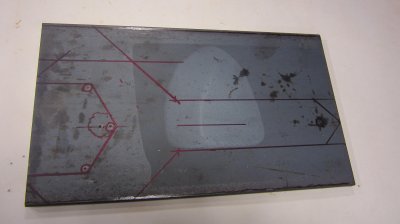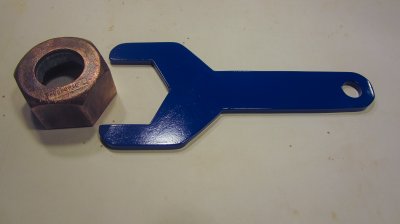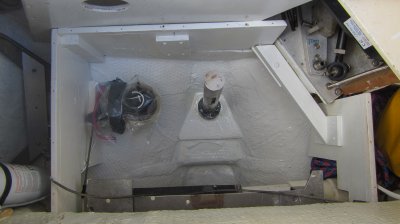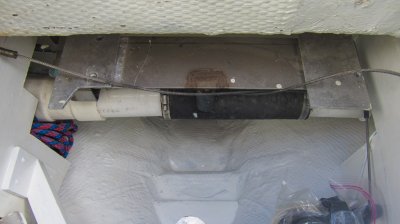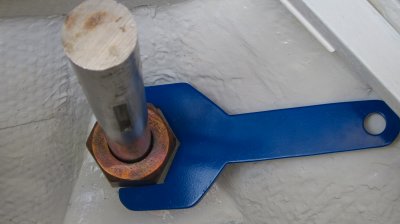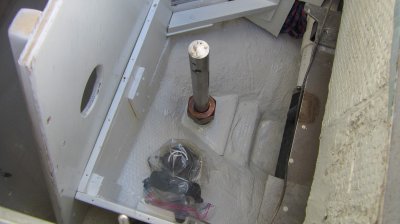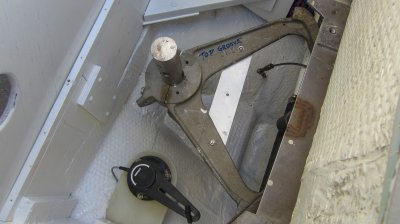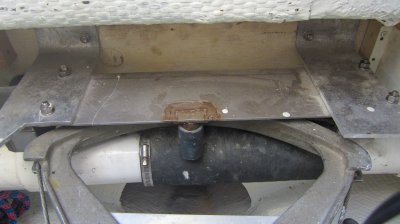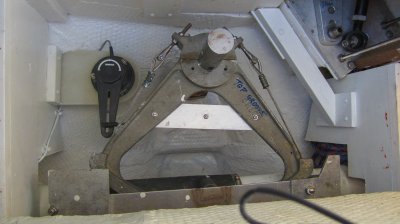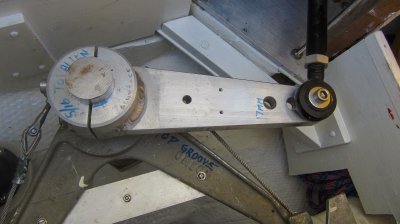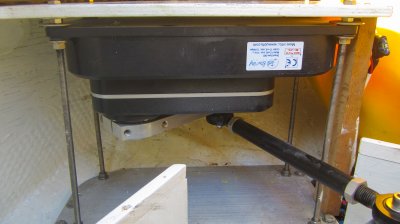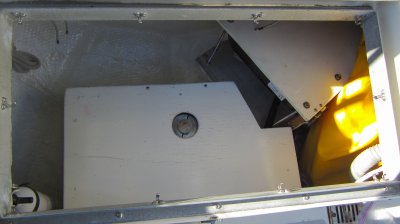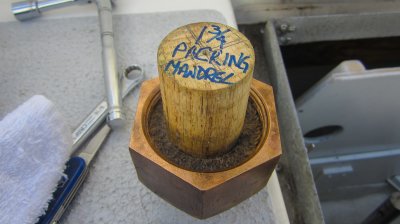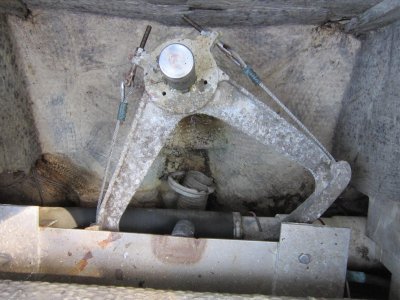Jeff
Dana is a 1978 382, hull #53. I'm not sure when the changes were made but, like Capt Pete's, the earlier boats had the Orion steering systems. The aluminum platform, in addition to supporting the rudder stop, support the cables from the pedestal on the port side and the turning block for the port wire on the stbd side. In the 29 years we've owned the boat, this is the first time I have done anything to the set up except for routine maintenance. The Orion company is long since out of business. The people at Edson tell me that if parts are needed, their stuff will fit. With the open design of the quadrant the stuffing box can be adjusted without having to remove the quadrant. I do like the support you have with those 2 x 4 posts.
I have given a lot of thought to redoing the torpedo tubes. But that would be a nasty job and since they haven't leaked in the boats 39 years, I think I'll let sleeping dogs lie. Besides, I kind of enjoy when people come over to ask me "what are those holes in your boat".
Jim


